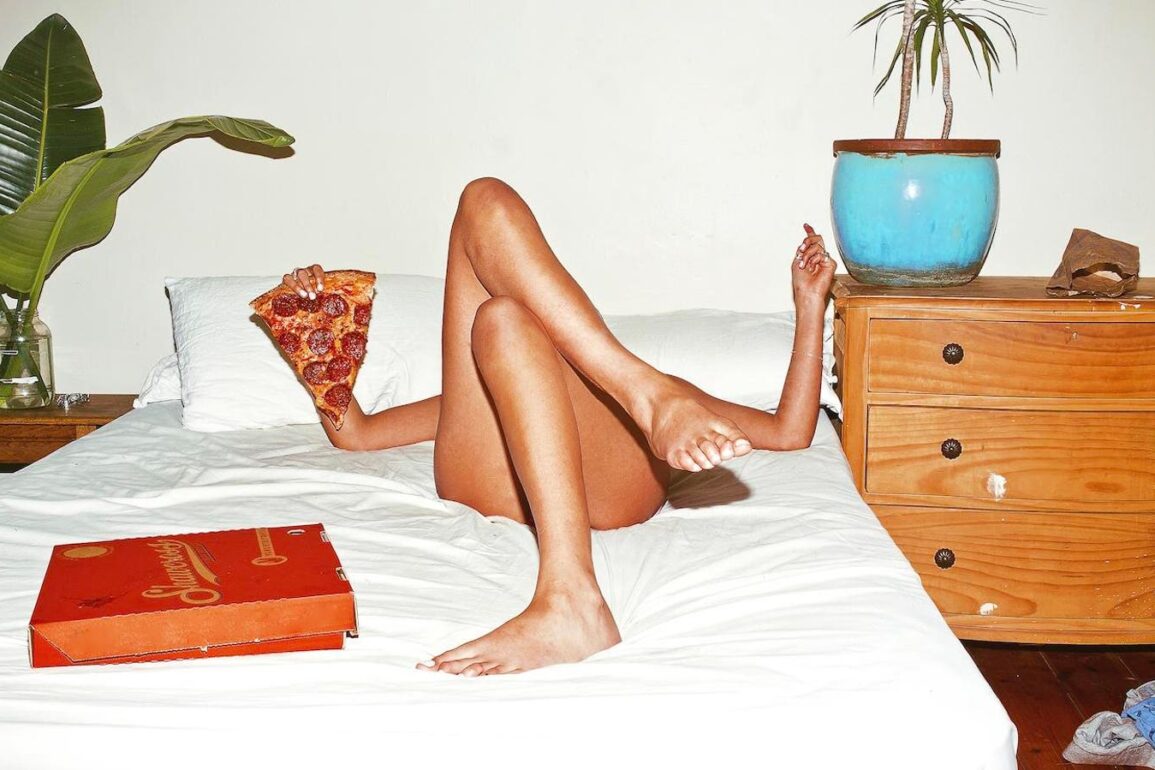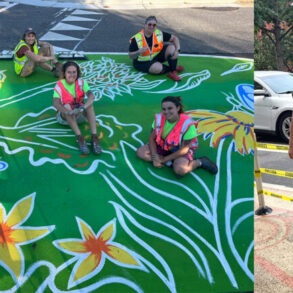
Sarah Bahbah‘s definition of success is refreshingly off-script. The artist behind some of Instagram’s most intoxicatingly raw visuals slices through the fluff to redefine triumph on her terms. Save the gallery nods and industry validation; Bahbah wants to feel something. As she charts her journey through pain and grief, it’s clear that her art is her catharsis.
Through her work, Bahbah turns pain into visual poetry. Through her platform, Bahbah addresses issues close to her heart, from honoring her Palestinian heritage and giving voice to those devastated by the ongoing occupation, to exploring the complexities of female sexuality. The artist, whose pieces have captivated a vast online audience, has the unique ability to explore what success means when your canvas is as much about healing personal wounds as it is about global conversations.
When it comes to personal truth, Bahbah serves it unfiltered and uncompromised—all while navigating the business complexities of a digital-first creative landscape. Here, we dive into the value of creativity and what it means for the next generation of artists.
Natalie Stoclet: How do you measure success as an artist?
Sarah Bahbah: It can be broken down into two aspects: financial success and a more holistic form of success. For the past decade, I’ve leaned into my art to navigate trauma, heartbreak, grief, pain, and suffering. When I felt like my safety had been compromised, I would reimagine situations where I was safe, where I had power, or where I said the things I wished I had said. For me, success is having the ability to go through this process. It’s taking that grief, turning it into art, and releasing it. When I release it, it’s no longer mine; I’m freeing myself from all the adversity. Success to me has meant I pushed past the pain.
NS: So, it’s very tied to your personal growth.
SB: Exactly. I sat with pain and allowed myself to feel the things I needed to in order to heal. Then, I created art from it. For me, that’s success. I believe the universe rewards those who do the work. Financially, success means being able to monetize my art. Since 2018, when I went independent, I’ve sold between 1,000 and 8,000 prints per series, offering them on a sliding scale so people can pay what they can. People often pay the most, which is very rewarding. They support the work and want to get behind me.
NS: Do you remember the first piece you ever sold?
SB: Oddly enough, it was at my high school graduation. The first piece I sold was a painting I did for an exhibition with all the other art students. My school bought my painting to hang in the reception, which felt really good. The money also helped me because I was about to go to college.
NS: How do you balance commercial success with artistic integrity?
SB: I only shoot once or twice a year. I haven’t picked up a camera for a photography series since “Fool Me Twice” in 2021. I have made two short films and have done several commercials since then. I don’t want to succumb to the pressure of creating content just to keep my brand alive, to pump out three videos daily. I don’t have the strength or energy for that because my art is sacred, and it’s a process that shouldn’t be rushed for the sake of “content”.
“Bonjour, Bitch” by Sarah Bahbah
NS: How has the perception of value in art evolved since the digital era?
SB: I consider myself a traditional artist who uses digital platforms to showcase my art, which greatly benefited my career. I’m grateful to platforms like Instagram, but it’s a lot easier to create and put things out there in this age.
Still, creating something unique and relatable is a challenge. You don’t see that every day. Artists creating special things will break through all the noise and content. I could be posting content every day, to maintain a presence online, but I’d rather put all my energy into one or two big things that will blow people’s minds.
NS: Do you think technology is changing art?
SB: Attention spans are shortening. Art will need to hook people more quickly. It will completely transform how we consume content because the hook has to be a lot quicker than it was for us. In order to keep people watching and consuming, you’re going to have to figure out how to change something every second. It’s going to be more erratic storytelling, for sure. It’s already changed things, but it’s going to be even more so. Technological advances, like AI, can be great tools for brainstorming or research but shouldn’t and could never replace art or creativity unless they figure out how to give it a soul.
“Sex and Takeout” by Sarah Bahbah
NS: Your distinctive style has garnered a vast following and inspired numerous artists, some of whom closely mimic your work. How do you navigate the fine line between influence and imitation, and what are your thoughts on originality online?
SB: I often see work that resembles mine, which is flattering. However, I’ve been doing this for a decade, and many people may only recognize my work through others who have been inspired by it, which can dilute the original source over time. Someone unfamiliar with my work might question my claim without understanding the context and history of where my art began.
In 2014, with “Sex and Takeout,” as far as I’m aware no one had combined those two subjects in an exclusive photo series before me. That was my thing, and it was a catalyst for my work being recognized and displayed in galleries internationally. That same year, brands were recreating my images pose for pose, prop for prop, and bed for bed. While some say to take it as a compliment, it felt more like intellectual property theft. That’s my work they’re recreating. It’s not emulation; it’s replication. And that, I think, is where you draw the line.
NS: I loved “Sex and Takeout.” How do you hope that work contributes to larger discussions around female sexuality?
SB: As an Arab woman from a strict household where sex was taboo and we weren’t even allowed to use tampons, there was a lot of confusion, guilt, and shame around my sexuality and liberation. Moving out was a turning point. “Sex and Takeout” was my way of navigating the guilt and shame from losing my virginity and dealing with an eating disorder. It created a safe space for expressing parts of myself I was struggling to navigate.
NS: What responsibilities, if any, do artists have in addressing global issues through their work?
SB: Each artist should navigate how to use their voice. It’s essential to decide for oneself without succumbing to societal pressures. However, as a Palestinian witnessing a genocide, I feel it’s my responsibility to use my platform to raise awareness for those without one. I’ve been vocal about the occupation in Palestine for years, a choice that aligns with my identity. I also believe in allowing each individual to go on their advocacy journey without judgment. We don’t know the conversations they’re having or the actions they’re taking beyond public platforms.
Sarah Bahbah
NS: Does your significant Instagram following influence your art?
SB: Catering too much to audience expectations would detract from the authenticity of my art, which is an extension of my storytelling. I believe in staying true to myself, trusting that my openness and vulnerability will resonate with those meant to receive it.
NS: What advice would you give to young artists trying to hone in on their craft?
SB: I emphasize the importance of introspection. Disconnect from distractions, spend time with your thoughts, and deeply explore your emotions. This process can guide you in discovering and expressing your narrative in an authentic and impactful way. Do it every day until the vision becomes clear. Then, once you have the vision, decide on the execution. Is it a photo series, a short film, a long film, or a poem? I always encourage young creatives to be still and eliminate all outside distractions. The last thing you want is to craft a story based on what you think others want to see rather than the story you wish to tell.
This post was originally published on this site be sure to check out more of their content








